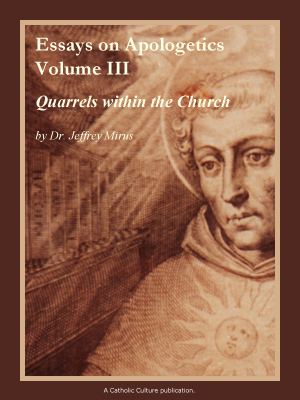Catholic Activity: The Catholic Pupil in the Public School
Parents must teach their children to value and uphold the traditions of the Catholic Church, especially if they attend public school. Here are ways to do this.
DIRECTIONS
School is the first experience away from home when a child will have to give reasons "for the faith that is in you." Why doesn't he have meat sandwiches on Friday? Why doesn't he have desserts in his lunchbox during Advent and Lent? Why does he go to Church certain weekdays during the year? He begins to take part in the lay apostolate in a real way when he answers these small things that set him apart a bit from the others. There are still people who do not know why they eat fish on Friday. But a child can understand easily enough that it is a self-denial in memory of Christ's sacrifice for our sins on the first Good Friday. Learning it, he will comment, "That's not much to do, is it?"
Self-denial during Advent is a form of purification, a preparation for meeting the Infant Jesus on Christmas with a clean heart and a clean mind. During Lent it is a penance, an attempt to atone for the sins that made it necessary for Christ to die on the Cross, so that we can greet Him at the Resurrection purged of evil and ready to start anew.
He goes to Mass on the Feast of the Ascension to rejoice that Christ has gone to Heaven before us, to prepare a place for us. He goes on All Saints' Day to rejoice that men and women, born in original sin like ourselves, can rise to the heights of sanctity with the help of God, and to celebrate with special love the joy of his own patron saints, begging their intercession for him before the throne of God.
He goes to Mass on the Feast of the Immaculate Conception to greet the spotless Virgin who bore the Son of God within her body and gave Him to the world on Christmas Day.
The graces of these feasts and all the feasts of the liturgical year can be applied to school life as well as home, and the child develops in his awareness that the mysteries of the Faith apply to the whole world, not just his house, his yard, his family. Two little boys whose families celebrated the Epiphany at home produced fat pieces of Epiphany cake in their lunchboxes the next day at school.
"Epiphany cake, Epiphany cake, hurrah, hurrah for Epiphany cake," they yipped.
"What's Epiphany?"
And when they explained, someone said, "Gee, I wish we had Epiphany."
But everyone has Epiphany. Christ was manifested to all men on Epiphany, not just to a few. One teacher became so much interested in an account of St. Valentine that she asked a mother to write it out, whereupon it was read in the elementary classrooms of a public school. That was something new indeed — that valentines could speak of love as coming from God. When another mother encouraged her children to make Nativity puppets, they gave a show in the classroom — at the teacher's request.
None of these things was calculated. They were the spilling-over from the lives of children whose parents have tried to teach them that religion embraces all of life — home and school, (in this case, public school). The children simply took their joy to school with them.
The Faith governs all of life, not just a fraction of it. If we forget that the hearts and minds and souls of men were created to be the dwelling place of the Holy Spirit, we leave our children to find their way, outside their homes and especially in school, as though they were blind. Light has always been symbolic of learning, and Christ is the Light of the World. The love He shares with His Father is the Spirit of Truth. Our children will be educated only when they see knowledge in relation to Truth, use it in the service of Love, and know that the end of it is eternal life.
Activity Source: We and Our Children by Mary Reed Newland, Image Books, 1961







